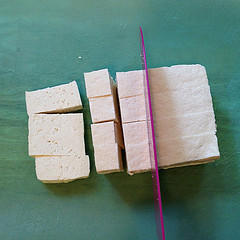Kitchen knives are a necessity for just about any type of cooking, but they can also be quite dangerous if used incorrectly. By learning the proper knife techniques, you can master the art of chopping, dicing, and slicing without risking injury.
- Start with a clean knife. Although you may think that cuts are the only dangers caused my knives, bacteria is also incredibly hazardous to your health. Be sure to clean your knife with hot water and dishwashing soap before using.
- Keep knives sharp. In order to guarantee fast, accurate cuts with minimal effort, you'll need to keep your knives sharp. You can do this by using a sharpening stone or by taking your knives to the store where you purchased them for sharpening.
- Learn to chop. Chopping involves roughly cutting a food item into pieces, and it is likely the most common cutting technique. To properly chop something, grip the knife securely and place either the knife's tip or the corner closest to your hand firmly against the cutting board. Use your wrist as a fulcrum to pull the rest of the knife up and down, keeping that end against the cutting board the whole time.
- Research other techniques. Dicing involves cutting into small, uniform pieces, while a chiffonade is how you properly cut herbs. You should also practice peeling things like apples or potatoes with a sharp knife.
Knife Skills: Different Types of Cuts [The Culinary Cook]
Top 10 Knife Skills [How Stuff Works]
Perfect Your Knife Skills With This Chef's Guide to Knives [Lifehacker]


 Equal Housing Opportunity
Equal Housing Opportunity